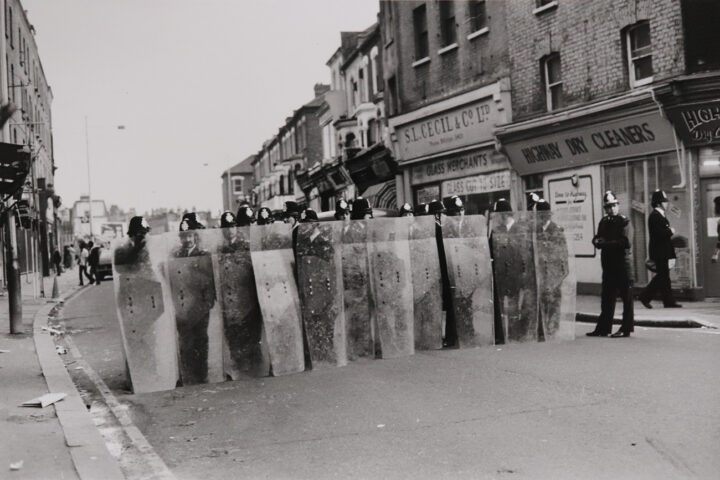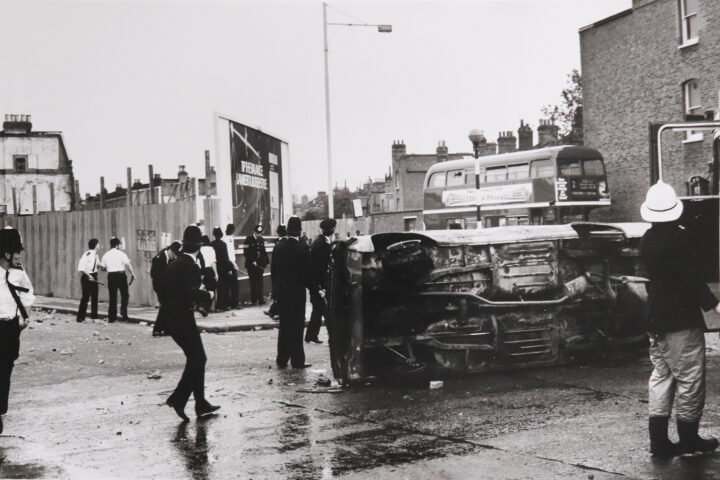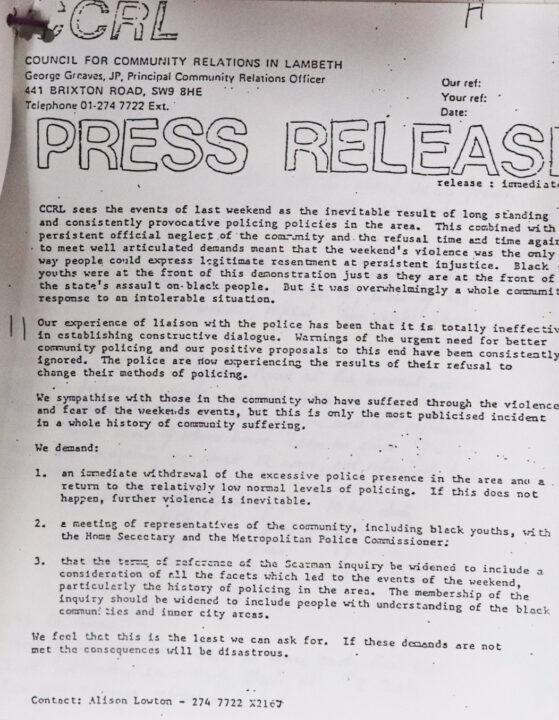
Home Office: Inquiry into the Brixton Disturbances in 1981
We hope you enjoyed watching our Education Service video with Modern Records Specialist Kevin Searle looking at records from the Home Office. This video focusses on some of the evidence and papers gathered to prepare the Scarman Report on causes of the Brixton uprisings. The title of the document is: ‘Inquiry into 1981 Brixton Disturbances (Scarman Inquiry): Evidence and Papers.’
Download Spotlight On: Brixton Riots Resource Pack
Now try and answer the following questions:
- The document examined in this video is from 1981. Why was it allowed to be viewed by the public for the first time in 2012?
- What is the role of the Home Office?
- When was it formed?
- What type of sources can we find in the Home Office collections?
- What makes Home Office collections valuable for historians?
- Why do you think different terms like ‘riots’ or ‘uprisings’ are used to describe events in Brixton in April 1981?
- What was the purpose of the Scarman Report?
- How does the document in the video relate to the Scarman report?
- What perspective does the document in the video arguably not include?
- Why is it essential to consult community archives, such as the Black Cultural Archives when researching this topic?
Document 1 – Photograph A
Photograph of riot police during the Brixton uprisings, 1981. Catalogue ref: HO 266/89
- Describe what you can see in Photograph A
- Why do you think this photograph was taken?
- What is the value of this photograph as evidence for these events?
- What other sources could you use to find out more about these events?
Document 2 – Photograph B
Photograph of the Brixton uprisings, 1981. Catalogue ref: HO 266/89
- Describe what you can see in Photograph B.
- Why do you think this photograph was taken?
- What is the value of this photograph as evidence for these events?
- What are the advantages and disadvantages of photographs as historical sources? Comment on Photographs A & B.
Document 3
Extract from a press release from Council for Community Relations in Lambeth, Catalogue ref: HO 266/89
- What is a Press Release? Why do you think this was produced?
- According to this document, what were the causes behind the disturbances?
- How does the document explain the causes for these events?
- What criticism is inferred of the Scarman report?
- What suggestions are made for better community policing?
- What perspective does this document reflect in explaining the causes for these events in contrast to Photographs A & B?
- What other sources could you use to find out more about these events?
Transcript
CCRL
Council for Community Relations in Lambeth,
…
PRESS RELEASE
Release: immediate
CCRL sees the events of last weekend as the inevitable result of long standing and consistently provocative policing policies in the area. This combined with persistent official neglect of the community and the refusal time and time again to meet well- articulated demands meant that the weekend’s violence was the only way people could express legitimate resentment at persistent injustice. Black youths were at the front of this demonstration just as they are at the front of the state’s assault on black people. But it was overwhelmingly a whole community response to an intolerable situation.
Our experience of liaison with the police has been that it is totally ineffective in establishing constructive dialogue. Warnings of the urgent need for better community policing and our positive proposals to this end have been consistently ignored. The police are now experiencing the results of their refusal to change their methods of policing.
We sympathise with those in the community who have suffered through the violence and fear of the weekend’s events, but this is only the most publicised incident in a whole history of community suffering.
We demand:
- an immediate withdrawal of the excessive police presence in the area and a return to the relatively low normal levels of policing. If this does not happen, further violence is inevitable.
- a meeting of representatives of the community, including black youths, with the Home Secretary and the Metropolitan Police Commissioner:
- that the terms of reference of the Scarman Inquiry be widened to include a consideration of all the facts which led to the events of the weekend, particularly the history of policing in the area. The membership of the inquiry should be widened to include people with understanding of the black communities and inner-city areas.
We feel that this is the least we can ask for. If these demands are not met the consequences will be disastrous.
Connections to curriculum
Key stage 3
Challenges for Britain, Europe, and the wider world 1901 to the present day; Britain’s place in the world since 1945.
Key stage 4
OCR GCSE History: OCR, Migrants to Britain c1250 to present: Race riots, violence, and integration from the 1980s.
Key stage 5
AQA GCE British Political History: The Making of Modern Britain, 1951–2007.
Edexcel GCE British Political History: Britain transformed, 1918–97.
OCR GCE British Political History: Thatcher and the end of consensus 1979–1997.
External links
Records held by the Black Cultural actives on Brixton Defence Campaign
Explore the collections at the Black Cultural Archives
Related Resources
- The Mangrove Nine
- How much can documents from The National Archives reveal about the Mangrove Nine?
- Black, Asian and Minority Ethnic Histories
- This resource contains a hyperlinked list of National Archives current resources for Black, Asian and Minority Ethnic histories on The National Archives website.
- 1919 race riots
- How significant a factor was race in the riots of 1919?
- Commonwealth migration since 1945
- What was the context and impact of migration in modern Britain?






